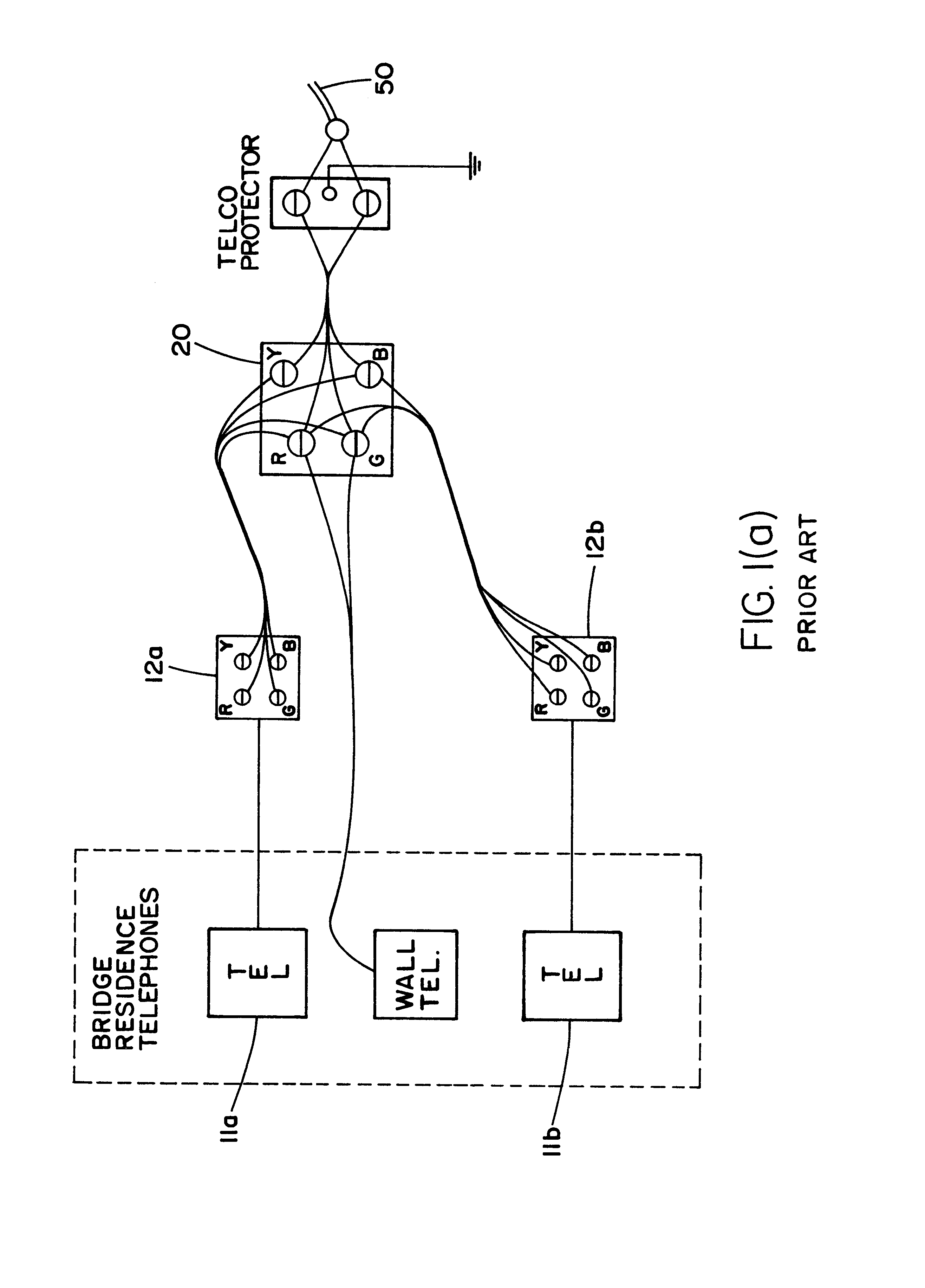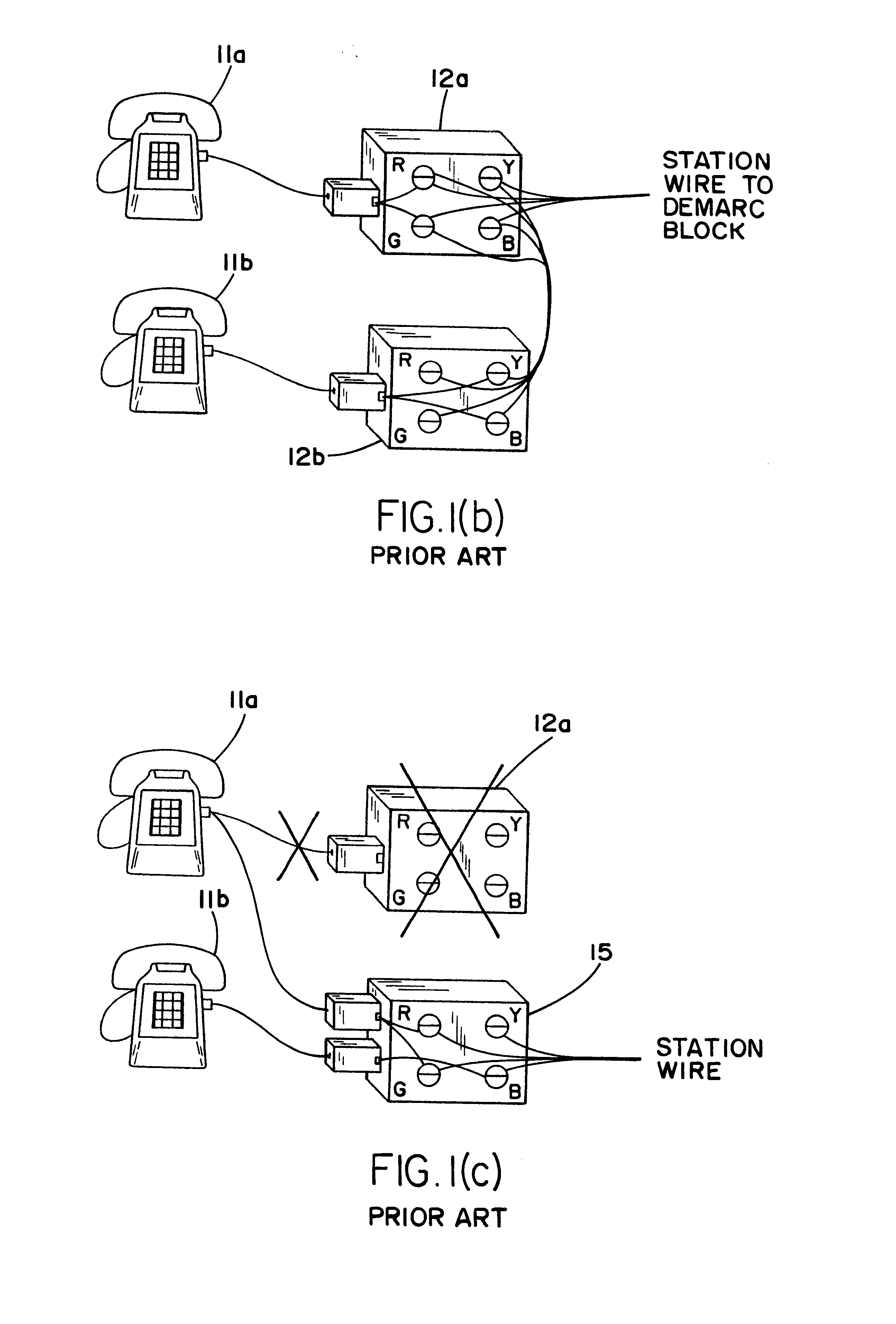Multi-line station interface
a multi-line station and interface technology, applied in the field of interface devices, can solve the problems of high cost of installing a second telephone adjacent to an existing one, unfavorable customer preferences, and significant difficulties in reconfiguring the premises for multi-line services, and achieve the effect of reducing the cost and facilitating installation
- Summary
- Abstract
- Description
- Claims
- Application Information
AI Technical Summary
Benefits of technology
Problems solved by technology
Method used
Image
Examples
Embodiment Construction
FIG. 2 illustrates a physical view of the multi-line and station interface (MLSI) device 100 of the present invention. As explained above, the multi-line and station interface device 100 ("interface device") includes circuitry (explained in detail below) which is enclosed in high impact housing and which is easily installable in any accessible area adjacent to the present LEC (local exchange company) demarc block which is provided by an existing primary service provider. As shown in FIG. 2 and the functional diagram of FIG. 3, the circuitry for the interface device is powered by an interchangeable power converter module 130 on the circuit board. The selected module 130 is dependent upon two optional power sources. The first option is power available from the service terminating interface (DEMARC) at the service location. The line can be powered from a protected source and can provide 35-60 volt quasi square wave AC to the interface device on terminals 105. The second and preferable ...
PUM
 Login to View More
Login to View More Abstract
Description
Claims
Application Information
 Login to View More
Login to View More - R&D
- Intellectual Property
- Life Sciences
- Materials
- Tech Scout
- Unparalleled Data Quality
- Higher Quality Content
- 60% Fewer Hallucinations
Browse by: Latest US Patents, China's latest patents, Technical Efficacy Thesaurus, Application Domain, Technology Topic, Popular Technical Reports.
© 2025 PatSnap. All rights reserved.Legal|Privacy policy|Modern Slavery Act Transparency Statement|Sitemap|About US| Contact US: help@patsnap.com



